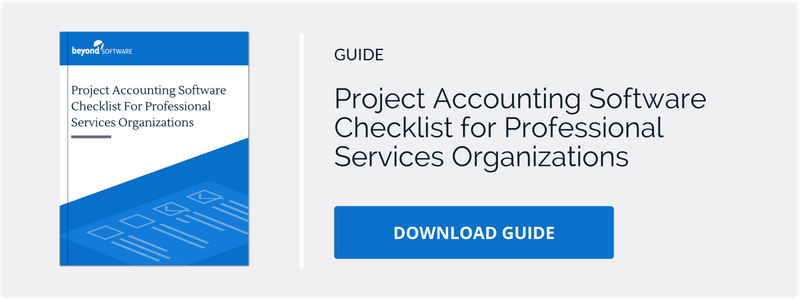Click to view part one of this series on value-based pricing.
In “Why Value-Based Fees Rarely Work in Consulting,” consultant Michael Boricki tells the story of Sara, a crackerjack software engineer at a large tech firm who decides her compensation is insufficient for her capabilities. So she goes to her manager and says, “I have these great skills the company truly needs and because of these outstanding skills I think I deserve a 20% increase.”
Instead of telling her that the company doesn’t want to lose her and that 20% sounds fair, Sara’s boss states, “ Sara, we appreciate your work and understand you want to be rewarded. However, to stay competitive we can’t afford to pay you 20% more. I hope you will stay with us but if you choose to leave we will just have to hire someone else with a similar skill-set, maybe even at a lower level of compensation.”
Value-Based Pricing Caveats
Sara’s story draws attention to what critics maintain is a primary weakness of value-based pricing: it ignores the economic principle of supply and demand. “Sara’s salary is not exactly determined by her skills but by the availability of those skills in the market,” continues Boricki. “The only way to charge higher rates is to have a skill or some capability or combination of skills that the rest of the market doesn’t have and which the buyer needs.”
Other negatives of value-based pricing frequently cited by its detractors include these:
- Value-based pricing doesn’t account for the unexpected or unknown aspects of projects.
- With value-based pricing, you still have to track costs.
- Value-based pricing leads to undervaluing services.
These become pitfalls only if allowed to. Regarding value-based pricing and the law of supply and demand, the true value of a service should be based on what will provide (a) the best outcome for the client and (b) the greatest return for the professional services organization (PSO) – not some arbitrary amount that ignores market factors. As the old saying goes: “If it’s not a good deal for everybody, it’s not a good deal.”
PSOs that strive for true value in their pricing typically have little trouble winning contracts and earning more revenue for their services than if they charged by the hour.
Simply put, projects with a lot of unknowns should not be priced until these “mysteries” are resolved. Lisa Tierney states: “If you don’t know what to expect when starting a relationship with a new client, that in and of itself is a red flag. Asking questions of the client in order to establish parameters around the engagement are key to ensuring a successful relationship.” It’s also key to ensuring accurate project pricing.
And granted, value-based pricing does not eliminate all project cost tracking – after all, knowing the charges associated with completed projects greatly improves estimating the cost of similar projects in the future. But what it does do is free team members from the mandatory to-the-minute and -penny bean counting that most professionals find so demoralizing about hourly billing. With value-based pricing, team members spend more time on meaningful work…and less time on administration.
As far as value-based pricing leading to the undervaluing of services, this can be overcome via use of a pricing council (see the next section).
Making the Switch to Value-Based Pricing
Okay, despite the criticism, you’ve decided that value-based pricing is a better billing model. How, exactly, do you go about implementing it at your PSO? To be sure, the process is not without its hurdles. “The biggest challenge of introducing a value-based billing model is the shift of mindset required from both the agency and the client,” claims Tara West. To ease the transition to value-based pricing, Stephan Craft in “Why value pricing is the new billable hour” suggests this five-step process, based on the work of Ronald Baker:
- Have an in-depth discussion with clients to understand (a) the scope of their work and (b) what value really means to them.
- Create a pricing council to evaluate services and determine what they are truly worth so that underpricing and overpricing can be avoided.
- Build a flexible pricing structure with different prices for different levels of service (e.g., good, better, best).
- Guard against scope creep. Carefully define and track the scope of services to be provided, and quickly resolve any deviations.
- Focus on delivering value to the client.
Note that in step 5, Craft also advocates throwing away the timesheet as fundamental to a proper focus on value. This may be extreme. While value-based pricing can simplify time tracking, reducing the time devoted to this task, it doesn’t eliminate the need for time tracking in some form.
Especially in a value-based pricing system, tracking time with a certain degree of accuracy is critical to ensure services are priced correctly.
This, too, is part of delivering value to the client – and where a good time-tracking software package can be invaluable.
Variations on the Value-Based Pricing Theme
One attractive characteristic of value-based pricing that makes it an even more viable billing method for PSOs is the many variations of the basic pricing model that are available. These alternatives enable value-based pricing to be adapted to practically any PSO billing situation. Tara West highlights three forms of value-based pricing found in the marketing world:
- Flat fee agency billing – Setting a price up front for a service based on its value, not the time required to complete. This is the classic value-based pricing model.
- Payment by result – Paying for services based on the results they deliver (percentage of units sold, number of units sold, etc.). This proposition can be extremely risky for PSOs.
- Combined flat fee and performance incentive – Charging a flat fee for services with performance-based bonuses that kick in when predefined performance targets are reached.
For an excellent discussion of six value-based pricing variations often used in the legal profession, see Guide to Value-Based Billing by the Association of Corporate Counsel.
Value-Based Pricing and the Future
As the world’s businesses continue shifting toward a service orientation, many experts view value-based pricing not as just an alternate billing method – but as a critical element of success in a knowledge economy. “We can’t measure value by the amount of time someone spends on something,” says Ron Baker. “The value of the polio vaccine isn’t determined by the amount of time it took Jonas Salk to invent it.”
If you haven’t yet considered how value-based pricing could benefit your professional service organization, now may be the right time to make this effort.
For additional information on Beyond Software please contact:
Nicole Holliday
nholliday@beyondsoftware.com
866-510-7839




